What kind of wetsuit to choose? - learn tips to help you choose the right wetsuit


Neoprene, or polychloroprene, is a synthetic rubber material with excellent insulation properties and resistance to water and external environments. It is a high-density material with a microporous structure, which makes it retain the wearer's body heat. When water enters the suit, neoprene traps it in layers of micropores, which warm up due to body heat, creating an insulating layer between the skin and the environment. This allows the wearer to stay warm even in cold water conditions.
Neoprene is also water-repellent, meaning that it does not let water through as much as other materials. Even when the suit is wet, neoprene still provides some protection from the cold, protecting the body from direct contact with cold water.
Neoprene wetsuit protect the skin from the sun, but also from abrasions and damage from contact with sharp or dangerous surfaces such as rocks, reefs or from your equipment. In addition to the properties already mentioned, one more remains, namely buoyancy. It is lightweight and tends to maintain a certain buoyancy, which can be beneficial for those involved in water sports such as surfing, windsurfing.
The right size of the wetsuit makes all the difference !!

A properly sized neoprene wetsuit is crucial to the comfort of wearing and using it if it is to fulfil its thermal properties. The wetsuit should be your second skin. If it has slack in the back, knee bends or under the arms, it will let too much water through the middle. On the other hand, it must not be too tight as it will restrict movement, which will definitely affect your performance. If you are planning to buy a wetsuit online, we advise you to measure your body carefully and consult the size chart of different manufacturers.
Let's take a look at the breakdown of NeilPryde and O'Neill wetsuit by thickness, performance, construction and type of zipper.
We adjust the thickness of the wetsuits for air temperature as well as water temperature. As everyone feels the cold/warm differently, it is important to remember that this is highly individual.
How many mm your wetsuit will be is a key factor that affects its functionality in different conditions. Generally speaking, the thicker the wetsuit the better the thermal insulation, but also the greater the restriction on freedom of movement. Here is a breakdown of neoprene wetsuits by weight:
2mm: Wetsuits of this thickness are designed for warmer days or for sports that require more freedom of movement, such as surfing in warm waters. 2mmn is most commonly found in short wetsuits. Examples of models with this thickness: O'NEILL Bahia, Reactor Shorty, NeilPryde Rise Shorty, Nexus shorty, Spark Shorty
3-4mm: Wetsuits of this thickness are usually designed for moderate temperatures (warm spring or autumn and cooler summer days) or for sports that require more freedom of movement, such as surfing in warm waters. Models of this thickness: NeilPryde Nexus Steamer, Wizard Shorty L/S, O'neill Hyperfreak, Psycho Tech
5+mm: The thicker wetsuits are mainly for freezing conditions or people who are particularly sensitive to the cold. They provide excellent thermal insulation but may be less comfortable due to reduced freedom of movement
Examples of models of this thickness: NeilPryde Mission Hooded, Combat, O'neill Epic

Wetsuits are also divided into:
Semi-dry - Wetsuits with reduced absorbency. They have seam bonding from the inside out, collars on the back. They usually have additional seals on the sleeves and legs to reduce the amount of water entering. Furthermore, they are generally warmer than wetsuits
Wetsuits - allow water to enter the suit, but insulate the wearer's body and keep it warm. They are used in many disciplines such as surfing, kitesurfing, windsurfing, foiling
In addition to the aforementioned wetsuits, there are also dry suits. They are made of waterproof materials and have a waterproof zip. This ensures that they are 100% protected against water getting inside.
Wetsuits are usually made of 2 thicknesses of neoprene, and sometimes even 3 (3/2, 4/3, 5/4/3, 6/5, etc.) The thicker neoprene is found in areas prone to losing heat faster (chest, back, thighs) and the thinner one in areas where you need to have comfortable movement (arms, armpits, lower legs).

Which design should you choose?
Long with hood - Long sleeved and legged wetsuits with an integrated hood. This wetsuit is usually the thickest, intended for harsh conditions. Example models: NeilPryde Rise Hooded, Combat HoodedLong (Fullsuit) - Wetsuits with long sleeves and legs. These are mainly thicker wetsuits starting with: 3/2, 4/3, 5/4, 6/5/4mm. Example models: NeilPryde Serene, Wizard
Steamer - Short-sleeved, long-legged wetsuits in thicknesses: 2/2, 3/3 and 4/3mm. Mainly chosen for warmer conditions. A great choice for athletic trainers (no pressure in the forearm). Example models: NEILPRYDE Nexus Steamer, Rise Steamer, Spark, O'neill Reactor 2, Epic
Overknee - Wetsuits with short or long sleeves and extended legs past the knee. They further protect the knees from abrasion from the board and insulate a larger area of the legs. They come in 3/2, 3/3 and 4/3 thicknesses. Selected mainly for warmer or moderate conditions. Models: NeilPryde Rise, Wizard and O'neill Hyperfreak
Short (Shorts) - Wetsuits with short sleeves and legs in 2/2, 3/2mm thicknesses. The examples of NeilPryde Rise Shorty, Spark Shorty will definitely work well in summer
L/S shorts - Long-sleeved, short-legged wetsuits in 3/2 or 4/3mm thicknesses chosen for summer. If your upper body cools off quickly, this would be the ideal choice. Models: NeilPryde Spark Spring Low Cut, O’neill Hammer, Bahia
Which zipper will be the most comfortable?

Front Zip - the zipper located at the front, on the chest, is definitely tighter and warmer than the zipper at the back, which will affect your thermal comfort. Will work well in colder waters e.g. models: Serene, Wizard, Combat, O'neill Bahia
Back Zip - a zipper located on the back along the spine, it is the most comfortable type of zipper to put on and take off the wetsuit, however, a little less tight due to its location in relation to the FZ e.g. models: NeilPryde Mission, Combat, Spark or Nexus
Zipless - a system that does not have a zipper and can be found in very flexible wetsuits, allowing even greater freedom of movement, e.g. model: O'neill Hyperfreak Comp Zipless

What else contributes to the tightness and high quality of the wetsuit?
Manufacturers such as NeilPryde and O'neill use a variety of technologies to ensure the highest quality for the user. Their main focus is on ensuring the airtightness of the wetsuit and on thermal comfort. There are 2 types of seams in the wetsuits:
FL Seams (Flatlock) - i.e. flat seams that provide optimum comfort, durability and water tightness
BS Seams (Blind Stitched)- seams that do not go all the way through to the other side of the material make the material more airtight and limit water overflow
Some companies use GBS (glued and blind stitched) in addition to blind stitching.
LS (Liquid Seals) - an outer, heat-applied rubber layer that increases the tightness of the seams. It is mainly used in higher-end wetsuits for colder weather
On the other hand, in order to provide the best possible thermal comfort, manufacturers use a mesh on the inside of the wetsuit, which is placed in critical parts of the body. When in contact with the body, it retains water better, thus improving insulation and thermal comfort. In addition, it accelerates the drying of the wetsuit. Each manufacturer uses its own technology and nomenclature for the padding, for example: NeilPryde - Tech Zag, Mesh Pro, Fireline Pro, Hotcell 3Gen

When to use neoprene boots and gloves?
If you plan to surf all year round, a full suit will be essential for several reasons. When the temperature drops below 15°, it starts to get less pleasant. In such situations, equipping yourself with the right accessories, such as neoprene boots and gloves, can make surfing much more comfortable and enjoyable. Why should you opt for them?Protection from the cold: This aspect is extremely important, especially in colder regions or during the season when the water temperature drops. Neoprene boots and gloves provide extra insulation to keep your body warm even in the iciest water. They help you avoid the cold, allowing for longer and more comfortable surf sessions.
Injury protection: In addition to thermal insulation, neoprene boots and gloves also offer protection against potential injuries. When surfing, the complexity of the waves and the dynamic nature of the ocean can bring your leg or hand into contact with sharp rocks or other dangerous objects underwater. By wearing boots and gloves, you minimize the risk of injury and keep yourself safer
Better grip: neoprene shoes are usually fitted with special soles that provide a better grip on the board. This allows you to place your feet more confidently on the board, improving stability and control, especially during dynamic maneuvers and sharper conditions. Also, gloves can provide a better grip on the board, helping you to avoid accidentally slipping off the board.



JP-Australia’s 2025 Innovations – Collection Overview!
JP-Australia, a leader in the windsurfing industry, has just revealed its 2025 collection, bringing new technology, updated shapes, and innovative boards to elevate the water sports experience. From the groundbreaking S-TEC construction to enhanced designs of classic models and specially crafted boards for kids, the brand continues to focus on quality and excellence in every detail. Read on for a closer look!
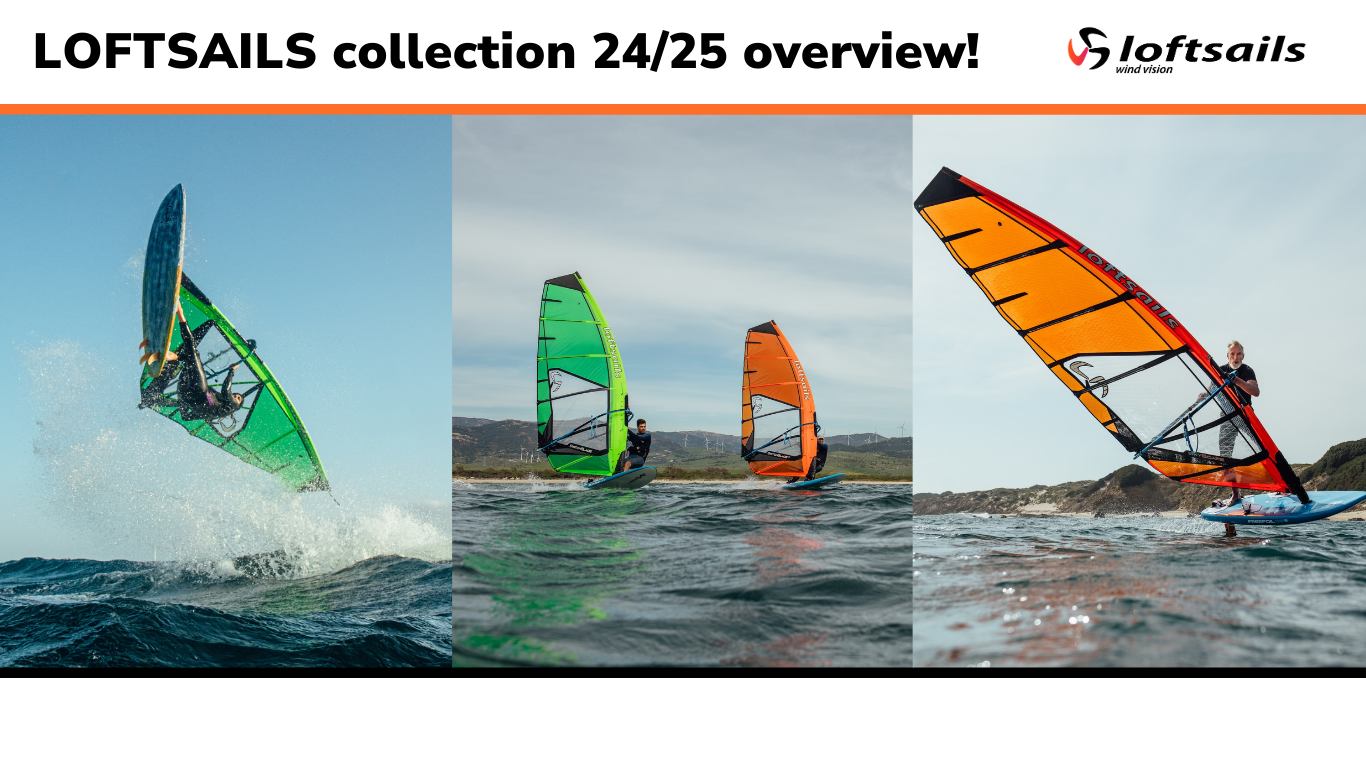
Loftsails 24/25 collection
We are thrilled to present the latest 24/25 Loftsails collection, now available for pre-order! This exciting line results from innovative technologies and years of experience that Loftsails has gathered in the world of windsurfing. Get to know the description of each model.
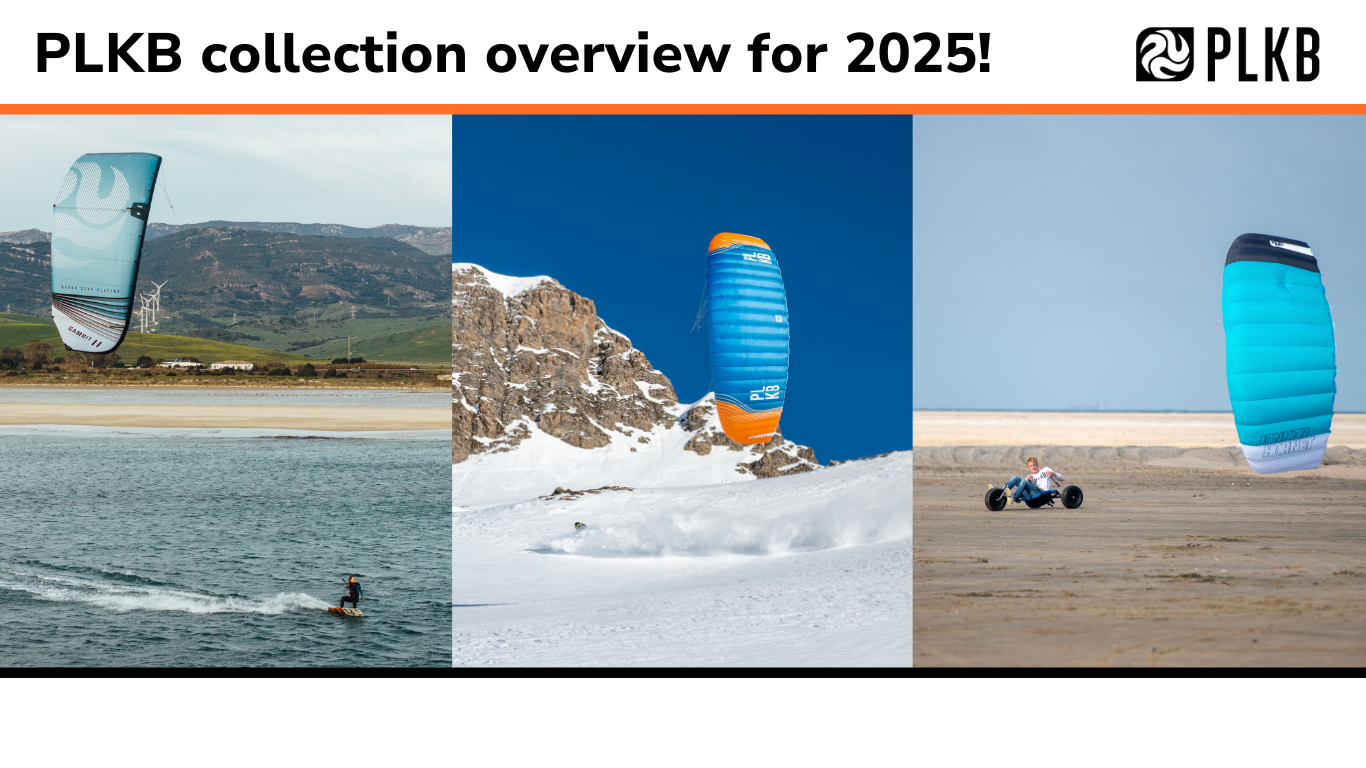
PLKB 2025 Collection – Kites and Gear for Kitesurfing, Snowkiting, and Landkiting!
Since we have launched preorders for 2025, and we are excited to present the entire collection from PLKB (Peter Lynn Kiteboarding). For years, this brand has been offering high-quality gear for kite, snow, and land kiting, allowing every kite sport enthusiast to find something suited to their needs, regardless of the terrain or season. PLKB’s extensive experience in creating kites that exceed expectations sets them apart, making every session enjoyable and thrilling. PLKB has taken on the challenge of outperforming major brands, overcoming all obstacles along the way.
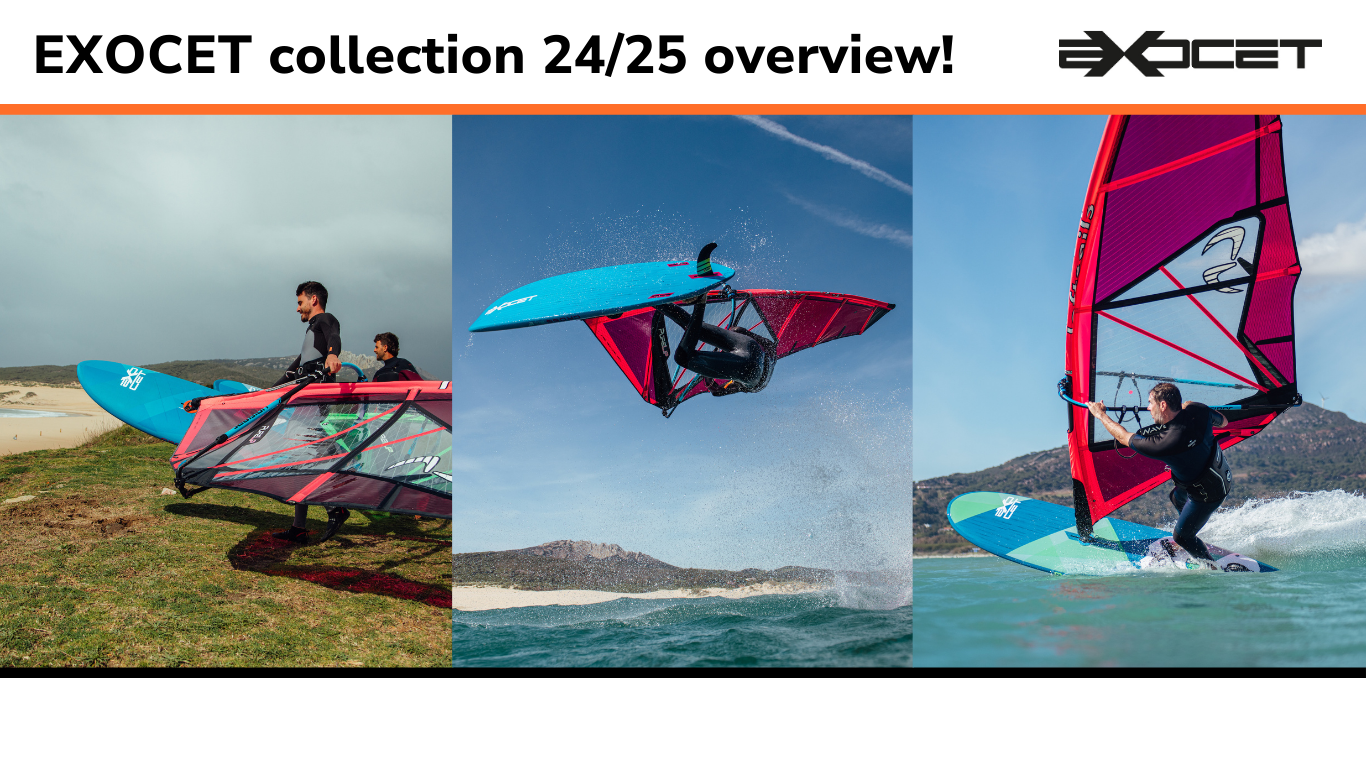
Exocet boards collection review for 2024/2025. Available for pre-order!
Meet EXOCET's collection of windsurfing boards for the 2024/ 2025 season, which is now available in pre-order! In the range of this french brand you will find constructions for classic windsurfing on the fin, as well as for foil. In this article we will acquaint you with the individual models to help you choose the right equipment for yourself ;) Don't hesitate to sign up for a preorder and get the latest model at a favorable price!
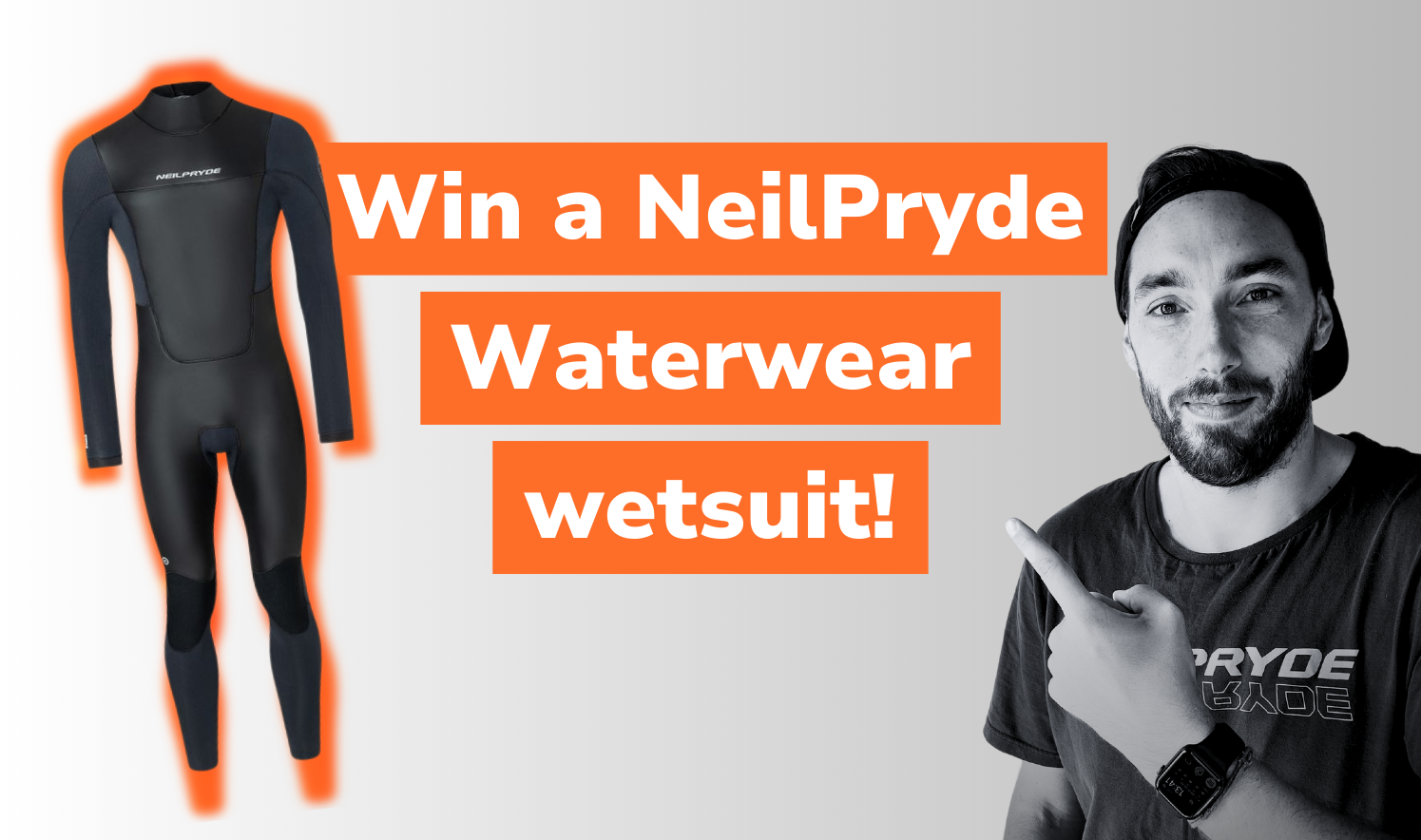
Win a NeilPryde Waterwear wetsuit!
Together with NeilPryde Waterwear, we're announcing a contest where you can win any wetsuit from the NeilPryde's range. Check the details below:

King of the Bay report!
What a weekend it was!!! 🤩 Rewa welcomed us royally! For four days, we enjoyed beautiful sunshine and conditions that allowed us to not only hold the planned races but also to carry out all other activities. The turnout exceeded our wildest expectations. Over 240 competitors registered for the event, and in addition to the participants, crowds of water sports fans flocked to Rewa. Everyone came with one goal: to spread passion and love for windsurfing, kitesurfing, wing foiling, SUP, and pump foiling! I'm still not fully recovered from this magical water sports festival, but the boost of positive energy and motivation we received, both myself and our entire EASY-surfshop team... It's simply indescribable! So much happened during these four days, and the event itself could be divided into two parts: racing and festival-market, which I'd like to briefly present to you.

What kind of wetsuit to choose? - learn tips to help you choose the right wetsuit
Are you planning to embark on a windsurfing, kit or foil adventure? If so, the first thing you will need is definitely a neoprene wetsuit, it will be an integral part of your equipment. The variety of wetsuits on the market can be overwhelming, so we'll give you a brief overview of the key elements when choosing the right one, but let's start with what exactly are they?
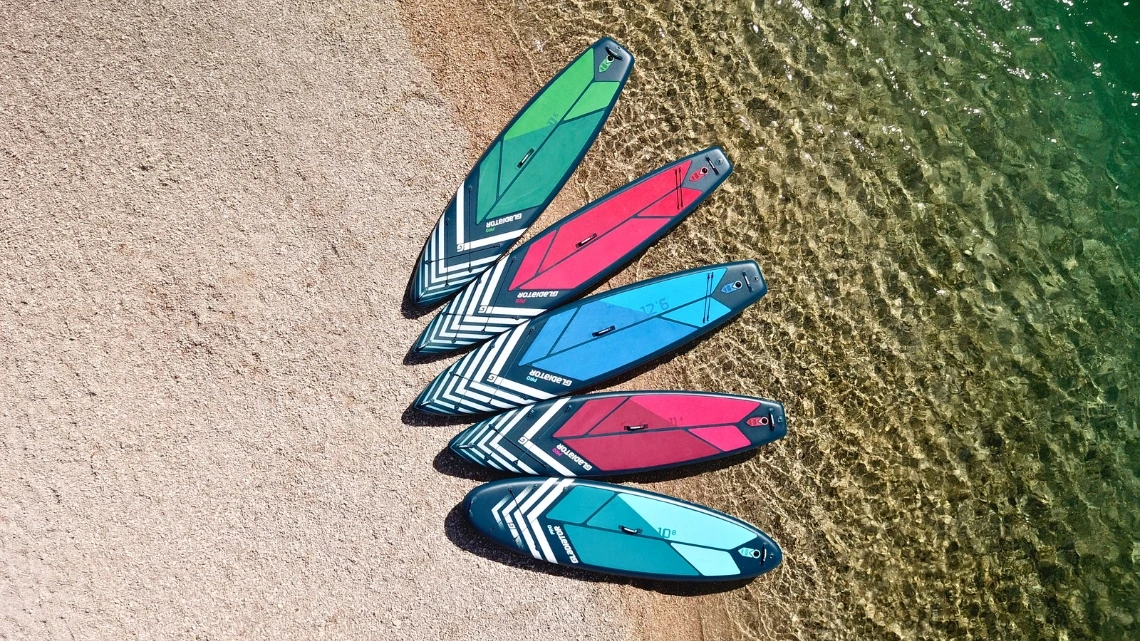
Gladiator SUP board collection review for 2024
SUP is an increasingly popular water sport that combines elements of recreation, training and adventure. If you're passionate about water activities, you've certainly heard of the Gladiator brand. Take a virtual tour of their SUP board collection for 2024!















 Facebook
Facebook Instagram
Instagram YouTube
YouTube